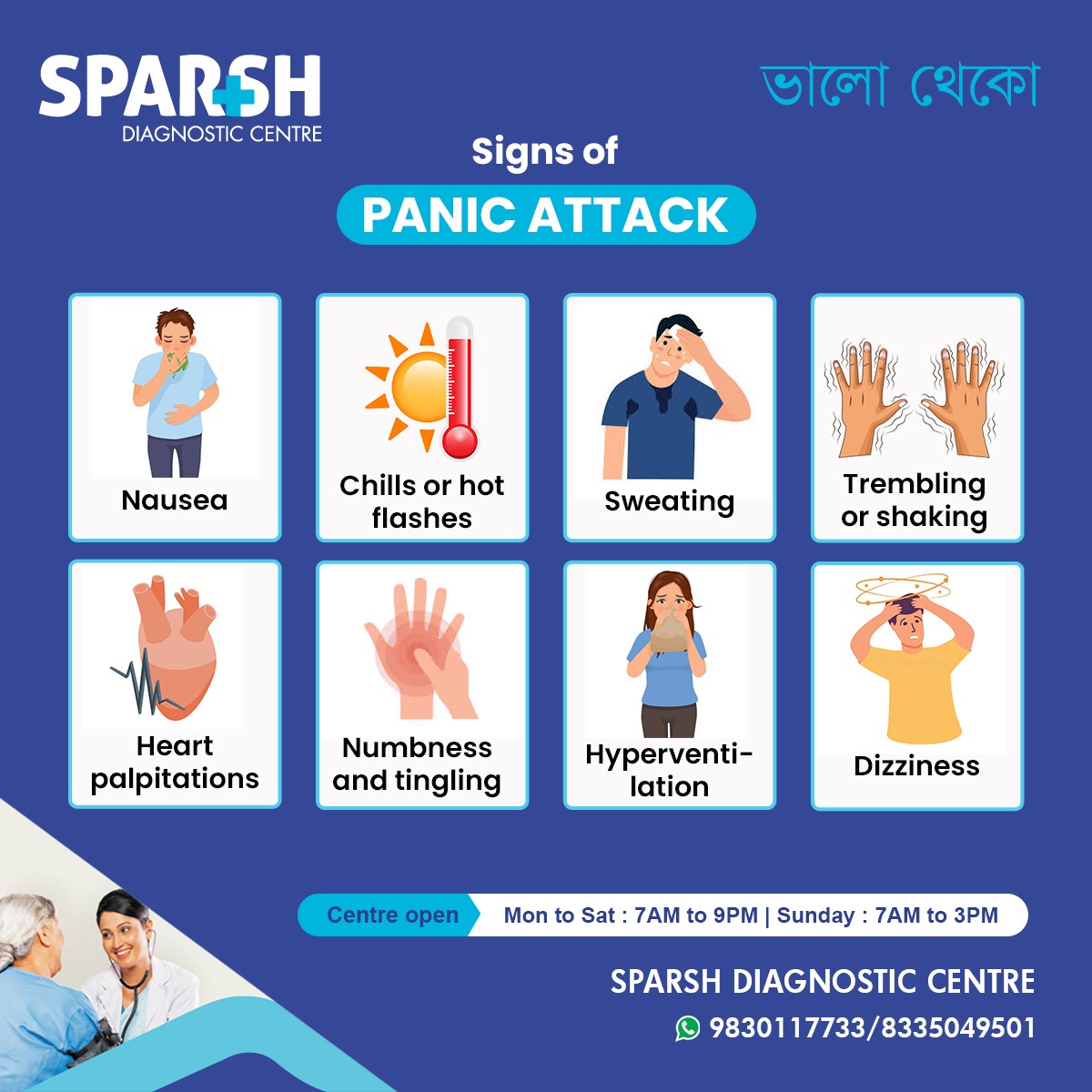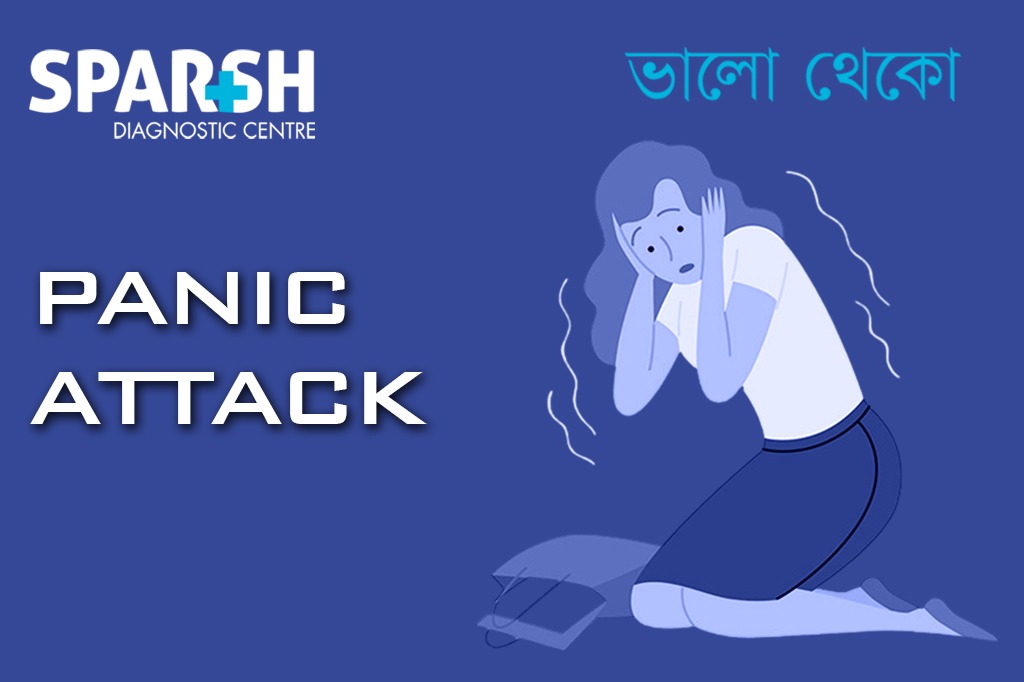Panic attacks can strike suddenly and without warning, leaving individuals overwhelmed and frightened. These intense episodes of fear or discomfort may feel like a medical emergency, but they are often psychological in nature. Recognizing the signs early and understanding the causes and treatment options for a panic attack is crucial for effective management. In this article, we explore everything you need to know about panic attacks—from symptoms to strategies for prevention and care.
What Is a Panic Attack?
A panic attack is a sudden surge of intense fear or discomfort that reaches a peak within minutes. It often occurs without any apparent reason and may mimic serious physical illnesses such as heart attacks. People experiencing a panic attack typically report a sense of losing control, feeling like they’re dying, or going crazy.
Key Characteristics:
Comes on suddenly and without warning.
Peaks within 10–15 minutes.
Often resolves within 30 minutes to an hour.
Can occur occasionally or frequently, especially in panic disorder.
Common Signs and Symptoms of Panic Attack
According to the infographic provided by Sparsh Diagnostic Centre, the most common signs include:
Nausea
Many individuals experience gastrointestinal discomfort during an attack, which may include nausea or stomach cramping.Chills or Hot Flashes
Sudden changes in body temperature are frequent, leading to sensations of chills or intense warmth.Sweating
Profuse sweating, especially on the palms, face, and underarms, is common.Trembling or Shaking
The body may visibly tremble, often uncontrollably.Heart Palpitations
Rapid, pounding, or irregular heartbeats can be one of the scariest symptoms and are often mistaken for a heart issue.Numbness and Tingling
A common but unsettling symptom, particularly in the extremities like fingers or toes.Hyperventilation
Rapid breathing or feeling like you can’t catch your breath often leads to dizziness and lightheadedness.Dizziness
A sense of unsteadiness or faintness often accompanies other physical symptoms.

What Causes Panic Attacks?
While panic attacks can seem unpredictable, several factors may contribute to their onset:
1. Genetics
People with a family history of anxiety or panic disorders are more likely to experience panic attacks.
2. Stress
Major life stressors such as the death of a loved one, job loss, or relationship problems can trigger attacks.
3. Personality Traits
People who are more sensitive to stress or prone to negative emotions may be more susceptible.
4. Medical Conditions
Certain health issues like hyperthyroidism, cardiovascular disease, or hypoglycemia can produce symptoms similar to panic attacks.
5. Substance Abuse
Caffeine, alcohol, and drugs (including withdrawal symptoms) may act as triggers.
Panic Attack vs. Panic Disorder
While an isolated panic attack is relatively common, recurrent and unexpected attacks that interfere with daily life could indicate panic disorder, a form of anxiety disorder.
Diagnostic Criteria for Panic Disorder:
Recurrent unexpected panic attacks.
Persistent concern about having another attack.
Maladaptive behavior changes related to the attacks (e.g., avoiding places).
How Panic Attacks Affect Your Body
Panic attacks activate the body’s fight or flight response, releasing adrenaline and other stress hormones. This causes:
Increased heart rate
Constricted blood vessels
Muscle tension
Dilated pupils
Heightened sensory perception
These physiological changes, while natural in dangerous situations, become distressing when triggered inappropriately.
Diagnosing Panic Attacks
There’s no lab test to diagnose panic attacks, but your doctor may perform several evaluations to rule out other conditions:
1. Medical History & Physical Exam
To exclude physical illnesses such as thyroid disorders or cardiovascular issues.
2. Psychiatric Evaluation
Involves questions about your emotional well-being, lifestyle, and triggers.
3. DSM-5 Criteria
Mental health professionals often use this diagnostic tool to determine if panic disorder or other anxiety disorders are present.
Treatment Options for Panic Attacks
Effective treatment combines therapy, medication, and lifestyle changes. Let’s look at each approach:
1. Cognitive Behavioral Therapy (CBT)
CBT is one of the most effective treatments. It helps you understand thought patterns, reduce fear responses, and build coping strategies.
2. Medication
SSRIs (Selective Serotonin Reuptake Inhibitors): e.g., sertraline, fluoxetine
SNRIs (Serotonin-Norepinephrine Reuptake Inhibitors)
Benzodiazepines: Used short-term for immediate relief (e.g., alprazolam)
3. Mindfulness and Relaxation Techniques
Practices such as yoga, meditation, and deep breathing help calm the nervous system.
4. Support Groups
Connecting with others facing similar challenges can offer encouragement and strategies.
5. Lifestyle Modifications
Limit caffeine and alcohol
Maintain a regular sleep schedule
Engage in regular physical activity
How to Stop a Panic Attack in the Moment
Quick intervention techniques can help reduce the severity or duration of an attack:
1. Focus on Your Breathing
Try the 4-7-8 breathing method: Inhale for 4 seconds, hold for 7, exhale for 8.
2. Grounding Techniques
Identify:
5 things you can see
4 you can touch
3 you can hear
2 you can smell
1 you can taste
3. Positive Visualization
Picture a calming scene or place where you feel safe and secure.
4. Use Affirmations
Repeating phrases like “This too shall pass” or “I am safe” can reduce anxiety.
When to Seek Help
Seek medical help if:
You experience recurring panic attacks.
The fear of future attacks limits your lifestyle.
You avoid public places or social situations (agoraphobia).
You experience suicidal thoughts or substance dependency.
Early intervention improves long-term outcomes significantly.
Complications if Left Untreated
Untreated panic attacks or panic disorder may lead to:
Agoraphobia: Fear of being in situations where escape might be difficult.
Substance Abuse: Using alcohol or drugs to self-medicate.
Depression and Other Anxiety Disorders
Poor Quality of Life: Difficulty at work, strained relationships, and reduced social activity.
How Sparsh Diagnostic Centre Can Help
If you or someone you know is experiencing signs of panic attacks, it’s crucial to get evaluated. Sparsh Diagnostic Centre offers comprehensive health screenings that help rule out underlying medical conditions that could mimic or trigger panic attack symptoms, such as:
Thyroid disorders
Blood sugar imbalances
Cardiac arrhythmias
Electrolyte disturbances
You can also benefit from personalized consultations and coordinated care with mental health professionals when needed.
Panic attacks can feel overwhelming, but they are manageable with the right strategies and support. Recognizing the symptoms early—like those depicted in the Sparsh infographic (nausea, chills, sweating, trembling, palpitations, etc.)—can empower you to take control of your mental and physical health.
Remember, you are not alone. Many people experience panic attacks and go on to live fulfilling, anxiety-free lives with appropriate care and management.
FAQs About Panic Attacks
Q1. Are panic attacks dangerous?
While panic attacks are intensely uncomfortable, they are not life-threatening. However, they can mimic symptoms of serious conditions like heart attacks.
Q2. Can panic attacks occur during sleep?
Yes, these are known as nocturnal panic attacks and can awaken you suddenly, causing fear and confusion.
Q3. Is it possible to prevent panic attacks?
While you can’t always prevent them entirely, therapy, lifestyle changes, and avoiding triggers significantly reduce frequency and intensity.
Q4. How long does a panic attack last?
Most panic attacks peak within 10 minutes and subside within 30 minutes, although some symptoms may linger.
Ready to Take the First Step?
If you’ve noticed signs of panic attacks or any unexplained physical symptoms, contact Sparsh Diagnostic Centre today. Our team is here to help you feel safe, supported, and healthy.
📞 For appointments:
📱 9830117733 / 8335049501
#BhaloTheko
Disclaimer:
No content on this site, regardless of date, should ever be used as a substitute for direct medical advice from your doctor or other qualified clinician.

![]()






[…] or Panic Attacks: Emotional stress or panic may cause shortness of breath and […]
[…] and anxiety can lead to panic attacks, during which breathing becomes extremely rapid. This can create a cycle: stress triggers […]
[…] Panic attacks or heightened anxiety. […]
[…] Anxiety or panic attack […]
[…] Disorder: Panic disorder involves sudden, intense episodes of fear known as panic attacks. These attacks often occur without warning and can cause severe physical symptoms such as chest […]
[…] and may last for a few minutes to hours. It can be caused by conditions such as an asthma attack, panic attack, or a pulmonary […]